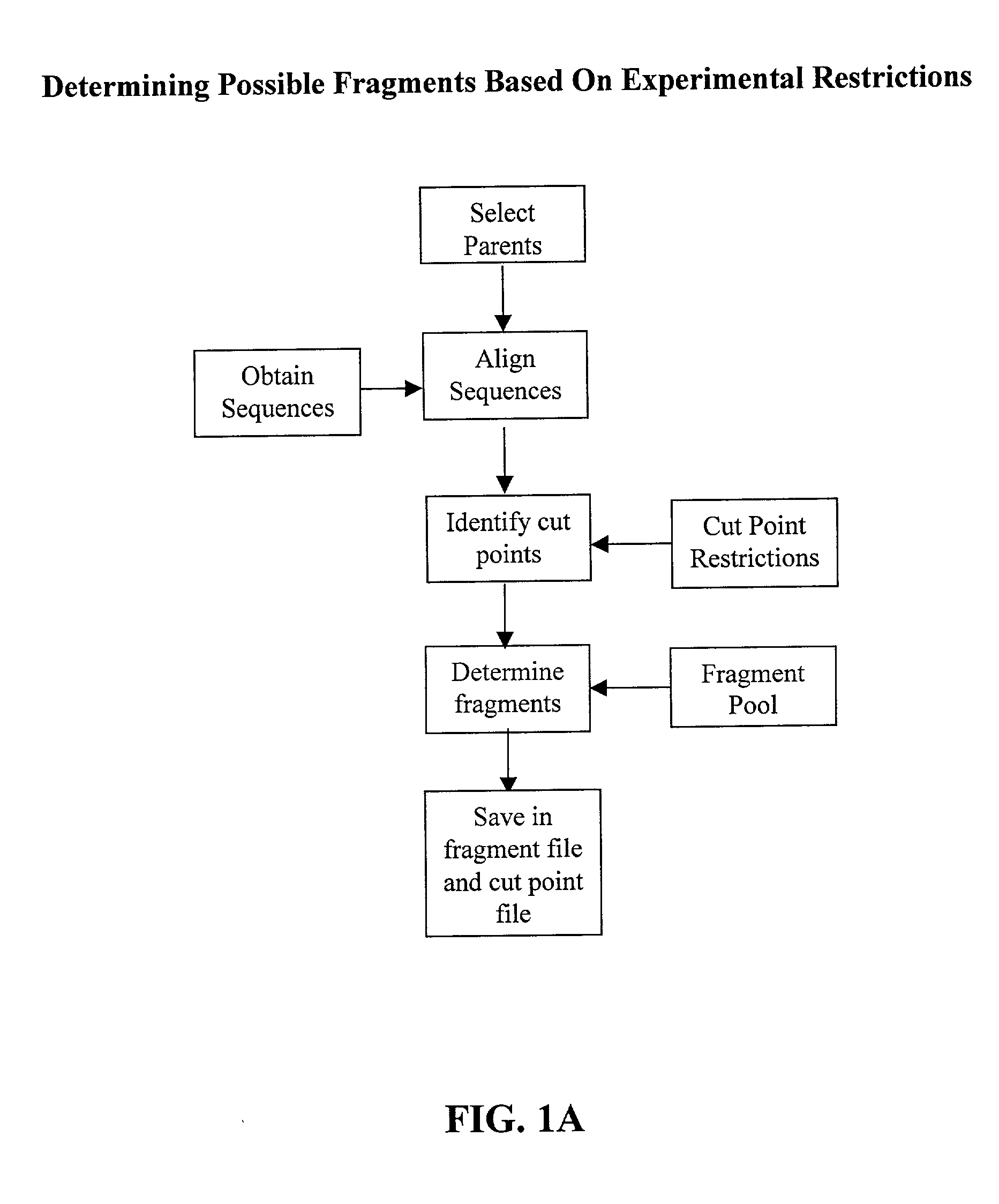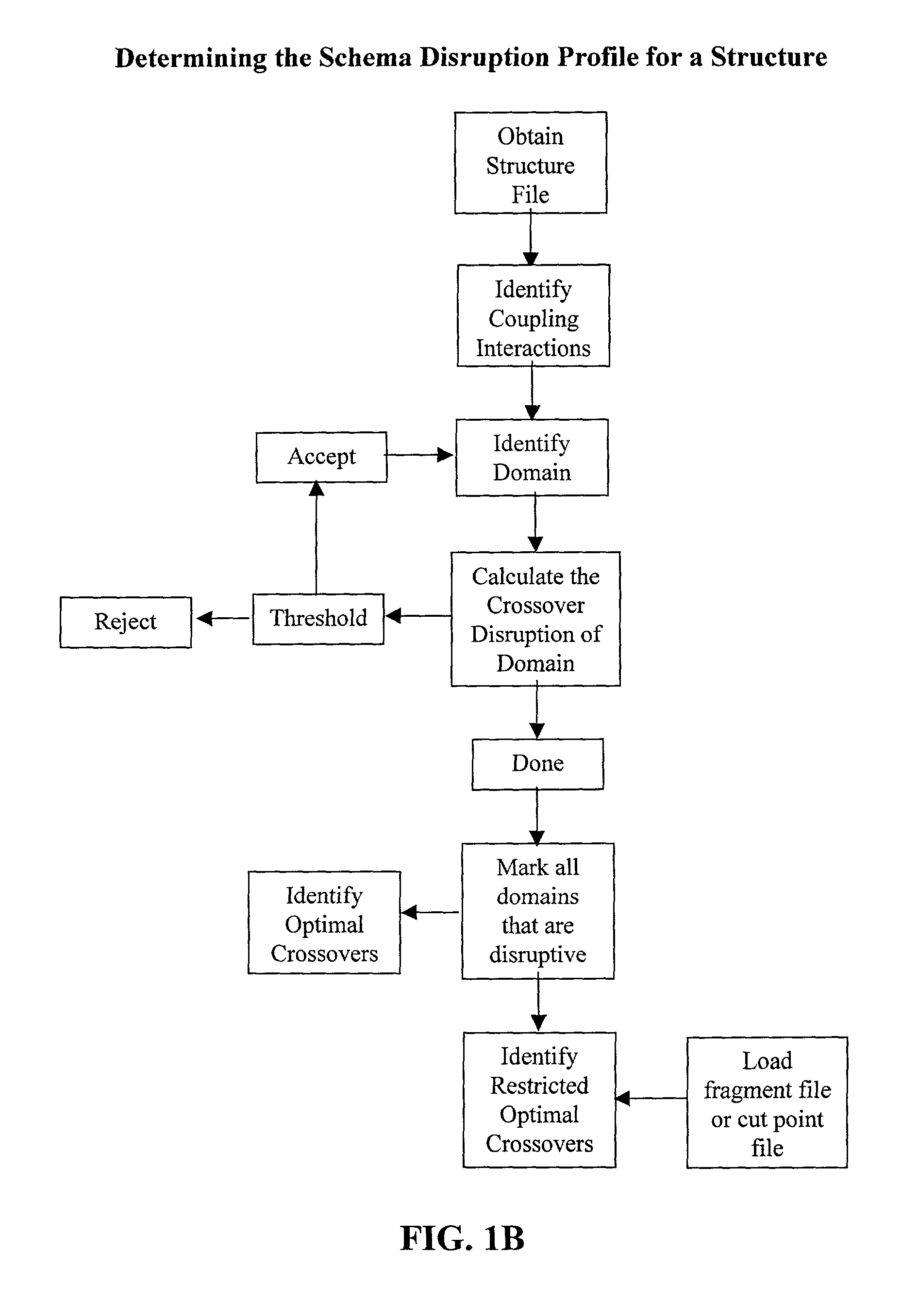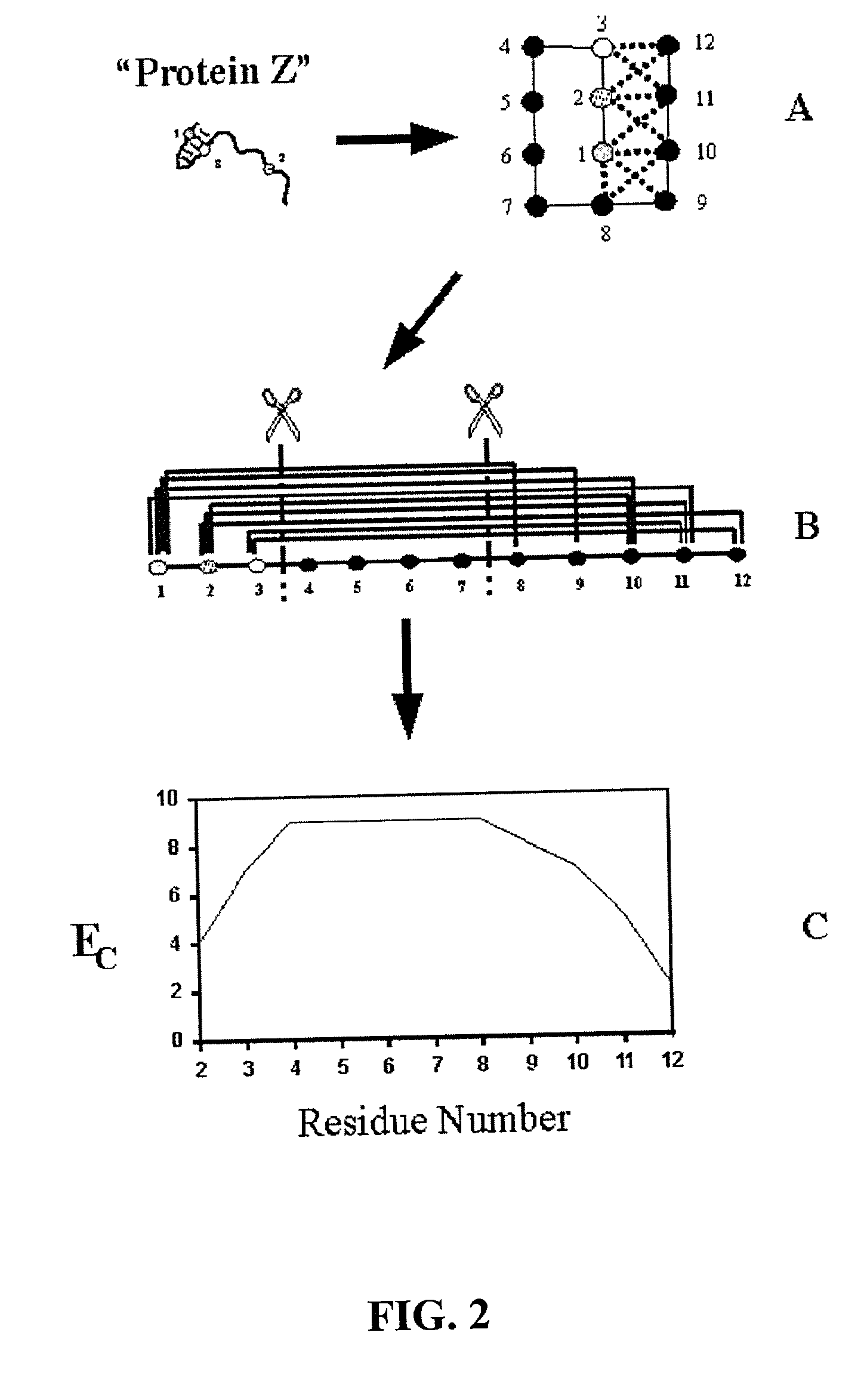Gene recombination and hybrid protein development
a technology of recombination and hybrid protein, applied in the field of biomolecular engineering and design, can solve the problems of long process, inability to produce or preserve changes that are desirable, and scientists looking for proteins with improved properties have had the very difficult task of searching for changes in proteins, etc., to achieve computational tractability, preserve stability and/or a desired property
- Summary
- Abstract
- Description
- Claims
- Application Information
AI Technical Summary
Benefits of technology
Problems solved by technology
Method used
Image
Examples
Embodiment Construction
[0074] The invention overcomes problems in the prior art and provides novel methods which can be used for directed evolution of biopolymers such as proteins and nucleic acids. 15 In particular, the invention provides methods which can be used to identify candidate locations in a biopolymer for crossovers, such that the biopolymer (e.g., polypeptide) will likely retain stability and functionality while allowing crossovers to occur. By generating hybrids that are recombined at selected candidate crossover locations or cut points, mutant or hybrid polymers having one or more improved properties may be more readily identified while simultaneously reducing the number(s) of mutants screened.
[0075] Details of the invention are described below, including specific examples. These examples are provided to illustrate embodiments of the invention. However, the invention is not limited to the particular embodiments, and many modifications and variations of the invention will be apparent to those...
PUM
| Property | Measurement | Unit |
|---|---|---|
| threshold | aaaaa | aaaaa |
| threshold | aaaaa | aaaaa |
| threshold | aaaaa | aaaaa |
Abstract
Description
Claims
Application Information
 Login to View More
Login to View More - R&D
- Intellectual Property
- Life Sciences
- Materials
- Tech Scout
- Unparalleled Data Quality
- Higher Quality Content
- 60% Fewer Hallucinations
Browse by: Latest US Patents, China's latest patents, Technical Efficacy Thesaurus, Application Domain, Technology Topic, Popular Technical Reports.
© 2025 PatSnap. All rights reserved.Legal|Privacy policy|Modern Slavery Act Transparency Statement|Sitemap|About US| Contact US: help@patsnap.com



